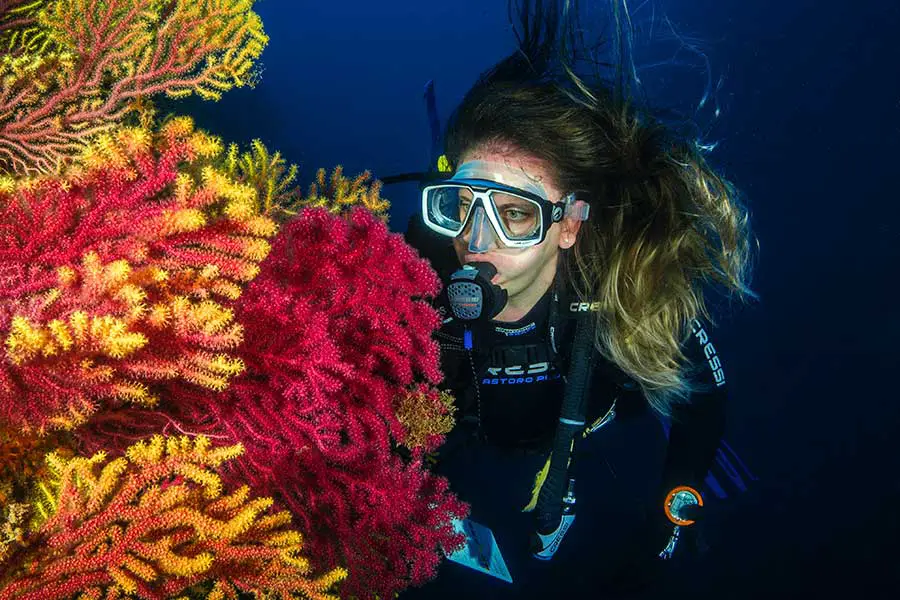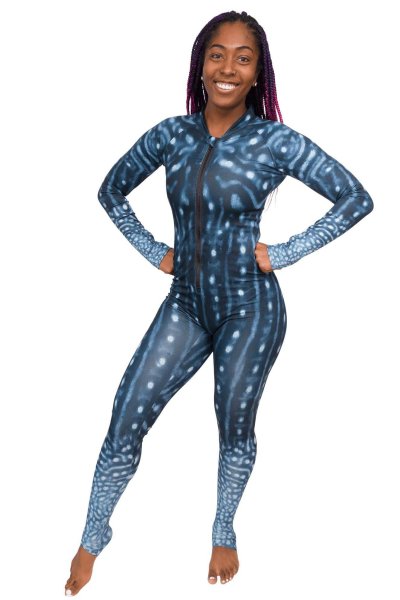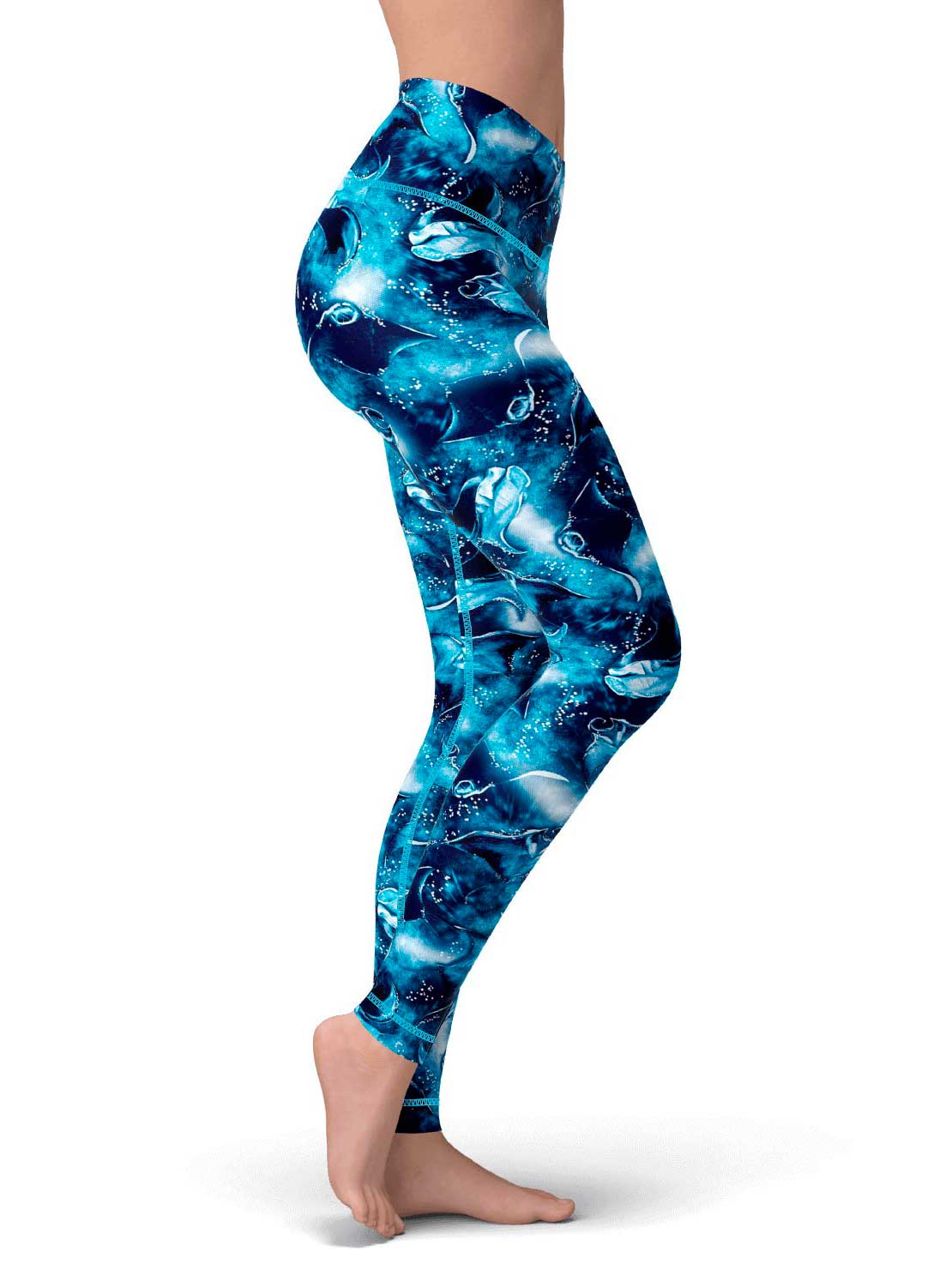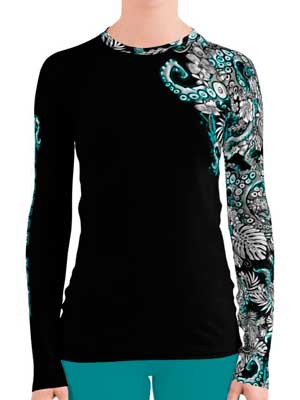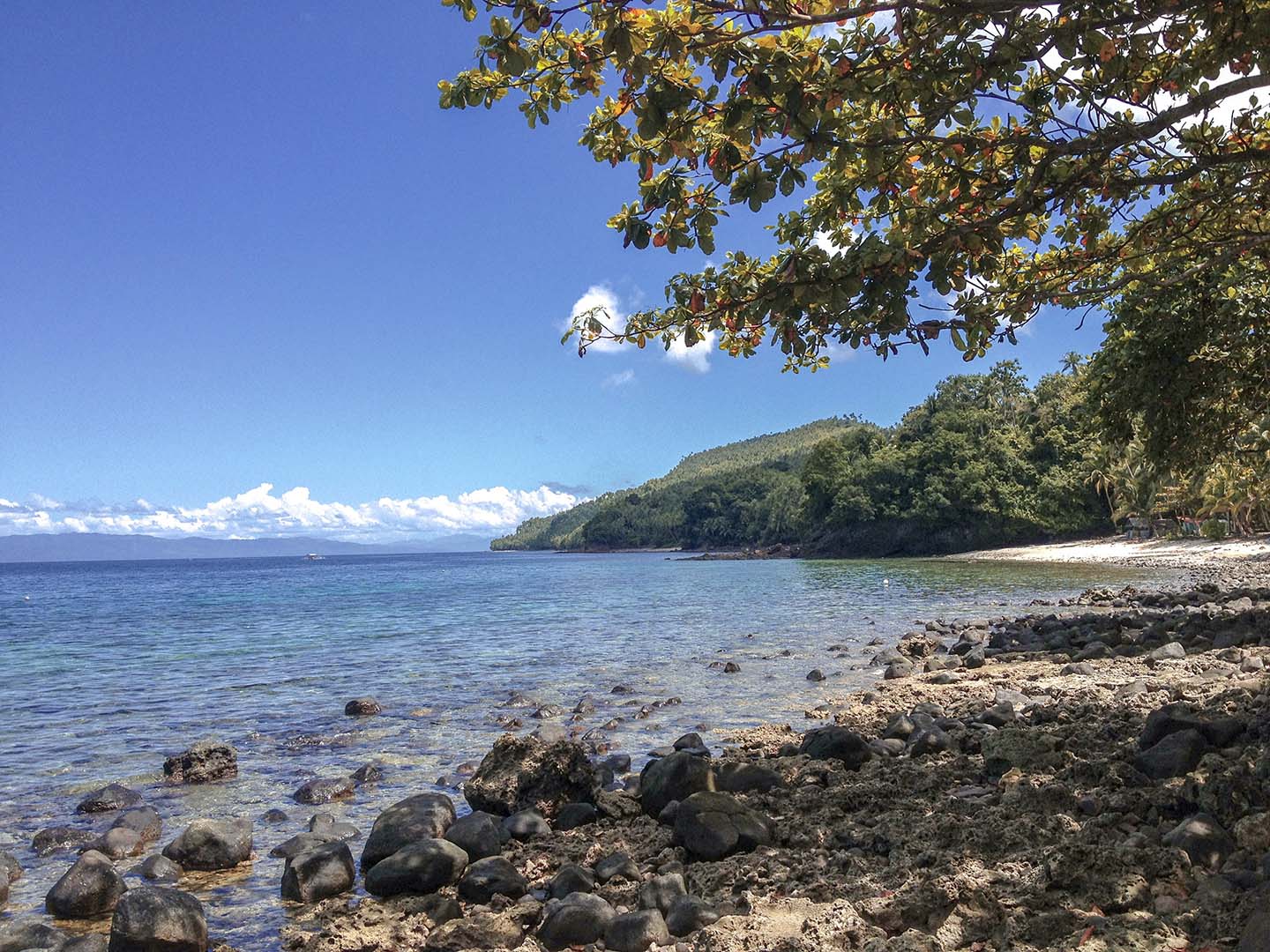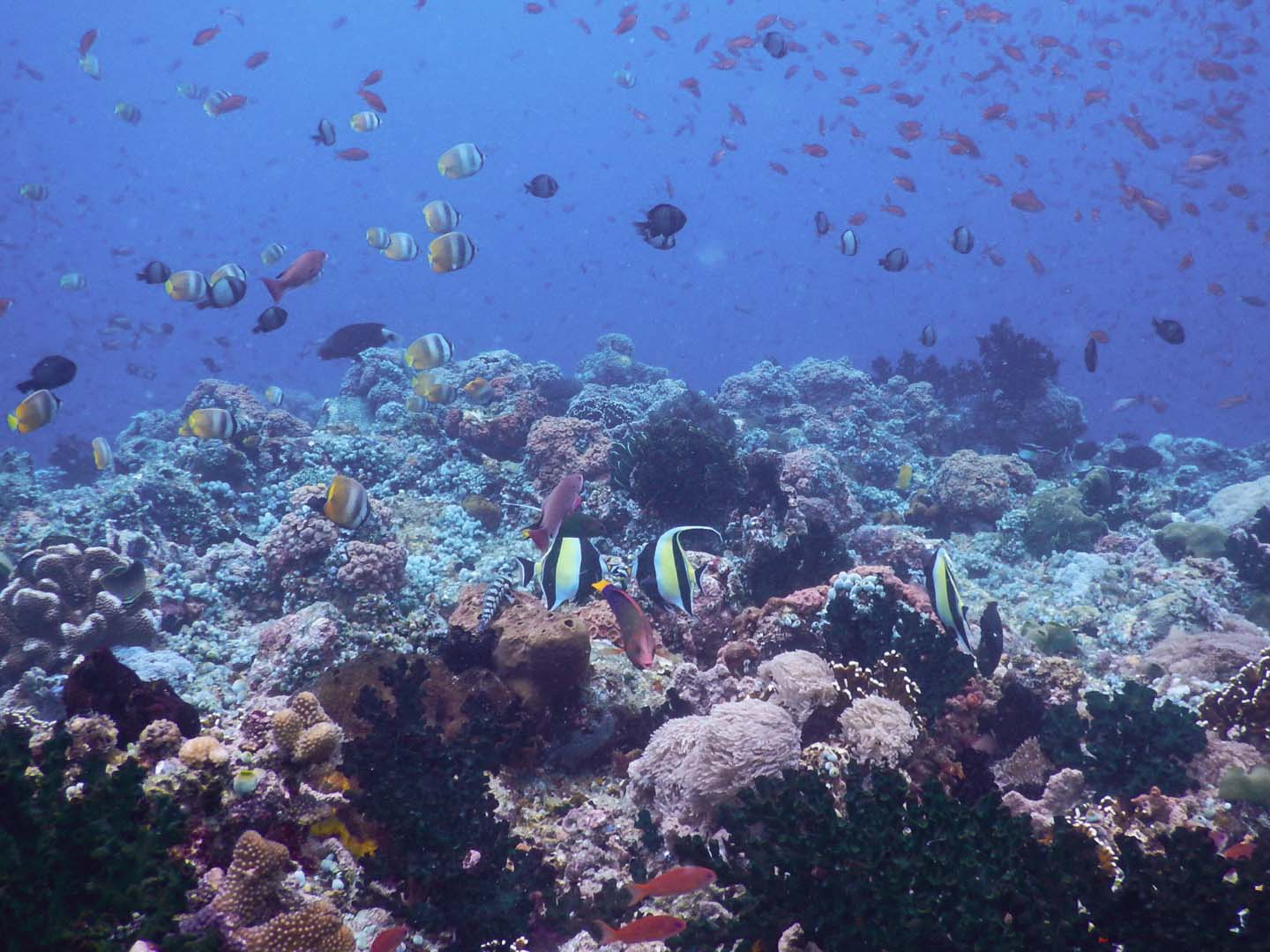Are you new to scuba diving and feeling discouraged by the number of scuba diving equipment and scuba gear you need to familiarize yourself with? Don’t you worry, what you are feeling is totally normal!
Learning about the pieces of equipment for scuba diving can be overwhelming and intimidating! But, it can also be exciting to learn the proper diving equipment names and their uses.
Below is an introductory guide for scuba diving equipment. I’ve included a comprehensive scuba dive equipment list, the uses and importance of each scuba gear, and of course, pictures for reference.
By reading this comprehensive beginner’s guide, you can learn about the scuba diving gear and equipment needed to safely explore the underwater world!
Essential Equipment for Scuba Diving
When you start scuba diving there are necessary scuba gear that you will need. Regardless of where you dive in the world or what types of diving that you do, these scuba diving equipment are a necessity. Here is the essential equipment for scuba diving that you must use to safely dive.
Regulator
If you didn’t know already, the term SCUBA actually stands for Self-Contained Underwater Breathing Apparatus. So when you go SCUBA diving it is referring to the special equipment used that allows you to breathe underwater.
To make scuba diving possible, one of the most important dive gear you will need is the regulator. The regulator is used to supply you with the compressed gas from the air tank so you can breathe underwater.
As the name suggests, the regulator works by regulating the pressure from the tank so air can be used by the diver. The air in the tank is highly pressurized so normally when the tank is opened the gas is released in a strong, continuous flow. What the regulator does is allow the gas to pass through a valve that automatically cuts off the flow of liquid or gas at a certain pressure. The gas is reduced to ambient pressure so the diver can use it for breathing.
A typical regulator set will have 4 major components:
- the first stage regulator
- the second stage regulators (primary air source and secondary air source)
- low-pressure inflator hose
- gauges
First stage regulator
The first stage is what you attach to the dive tank or cylinder via a yoke or DIN fitting. The regulator’s first stage is responsible for reducing the pressure of the gas that is released from the tank when it is opened.

Check the price of ScubaPro MK25 Evo First Stage Regulator with DIN Fitting on Amazon

Check the price of Scubapro MK17 EVO First Stage Regulator with Yoke fitting on Amazon
Second stage regulators
Once the air passes through the first stage, it travels through a hose to get to the second stage where air pressure is further reduced. The second stage is the device that divers breathe from. It regulates the amount of air a diver consumes as he breathes in and out of the device.

Check the price of Atomic Aquatics B2 Regulator on Amazon
The standard scuba diving regulator set up will have two second-stage regulators. You call these a primary air source and an alternate air source. The primary is the main device you breathe from and the alternate air source serves as your backup in case something happens to your primary.

Check the price of Cressi XS Octopus for Scuba Diving Regulator on Amazon
You can usually distinguish the alternate from the primary with the help of the bright-colored regulator caps and hoses it usually comes in. It is designed this way so it can easily be seen underwater during emergencies. In the event that your dive buddy runs out of air underwater, you can simply extend the alternate air source towards them to share your air. This is also why the second stage is also called the octopus, octo, occy, or buddy regulator.
Inflator hose

Check Promate 25″ Scuba Dive BC Inflator Regulator Hose with Quick Release Connector on Amazon
The regulator also comes with a low-pressure inflator hose. Attached to the first stage, the inflator hose is responsible for supplying air to a diver’s Buoyancy Control Device or BCD, which I will expound on later. A diver will occasionally need to inflate his BCD to achieve neutral buoyancy underwater or to help him stay afloat on the surface.
Gauges

Check the price of Aqua Lung 2 Gauge Console on Amazon
Regulators also have a Depth Gauge and Submersible Pressure Gauge (SPG) to help you determine how deep you are and how much air you have in your air tank, respectively. Depth gauges are in feet or meters, while the Submersible Pressure Gauges are in PSI (pounds per square inch) or Bar measurements. It is important to know these so you know if you’re diving beyond your limits and if you have enough air left to safely complete your dive.
Diving Tank
Another essential gear for scuba diving is the diving cylinder. Also known as the air tank, scuba tank, dive tank, this special gas cylinder is used to store high-pressure breathing gas. This scuba dive equipment supplies the diver’s air, making it possible for them to stay underwater for long periods of time.

Check the price of Faber FX Series 100 cubic foot High-Pressure Blue Steel Tank on Amazon
Depending on your needs and requirements, steel and aluminum cylinders are available to divers. While each has its pros and cons, aluminum tanks are more widely used around the world as they are more economical and easier to maintain.
Regardless of what you choose, dive cylinders can be filled with two types of breathing gases for scuba diving. Normal air, which is air taken through a filtration system and then pumped into the tank, and Enriched Air Nitrox (EAN), which is a special mixture of nitrogen/oxygen gas that has a higher concentration of oxygen compared to the normal.
Tanks filled with normal air usually have 21 percent oxygen while tanks filled with Nitrox has higher concentrations of oxygen. 32% oxygen is the most common Nitrox mix. Tanks filled with Nitrox are clearly labeled to prevent normal air divers from using them by accident. Using Nitrox requires specialty training so if you want to use Nitrox make sure get an Enriched Air diver certification.
Many recreational divers do not buy their own dive tanks. Instead, they rent from the dive centers that can supply them with clean tanks and air. Whether you end up buying or renting, always make sure that the dive shop you use follows the highest standards when it comes to refilling air.
Buoyancy Control Device
The Buoyancy Control Device or BCD, also known as Buoyancy Compensator or BC, is another essential scuba diving equipment worn by divers to help them adjust and control their buoyancy in the water.
Scuba divers need to be negatively buoyant so they can sink, positively buoyant so they can float, and neutrally buoyant so they can remain suspended at a single depth underwater. To achieve this, divers need to add or remove air from the integrated air bladders found in the BCD.
There are two types of BCDs divers can choose to use: the jacket-type or the back-inflate BCDs.
The jacket-type or vest-style BC is more commonly used among divers. They look a lot like life jackets and they’re easy to put on and take off.
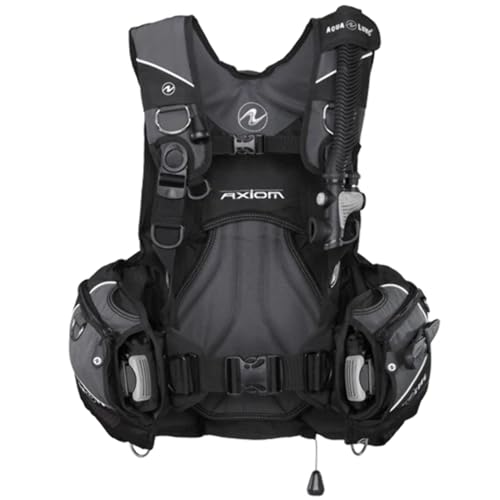
Check the price of Aqua Lung Axiom Scuba Diving BCD on Amazon
If you do a discover scuba diving course or get your scuba diving certification, most likely you will learn how to dive using the vest-style BCDs. Most dive shops only rent out the jacket-type BCs as they’re more economical and offer a better fit for most divers.
Unlike the jacket-type BCD that has a built-in air bladder in the front, side, and back, the back-inflate buoyancy compensators only have air bladders at the back.

Check the price of Cressi Travel-Friendly Light Back Inflation BCD for Scuba Diving on Amazon
Back-inflate BCDs are more popular among technical divers since the position of the bladder frees up the diver’s torso. This allows them to have a wider range of motion needed in tech-diving.
There is also a type of back-inflate BCD known as the BPW or backplate and wing. The BPW setup allows for a more customizable BCD configuration. You can mix and match parts to fit your diving style and needs.

Check the price of xDeep NX Zen Deluxe Scuba Diving BCD for Single Tank on Amazon
Dive Computer

Check the price of SUUNTO D4i Novo Scuba Diving Computer on Amazon
A dive computer is a diving gear that tracks and records a diver’s time and depth information while he is underwater. This is another piece of equipment for scuba diving that is essential to every diver.
The dive computer has a built in depth sensor and timer and using an algorithm it is able to compute how fast you absorb gases. Your dive computer can help you dive safely by giving you real-time information.
Based on the data collected on your dive, your dive computer can give you warnings if you are pushing your limits or diving in an unsafe manner. It can tell how much dive time you still have based on the depth you’re in and it can also tell you how much time you need to stay on the surface before you next dive or before you can fly.
Dive computers can help lower the risk of decompression sickness by warning you if you are ascending too fast or if you’re diving in a way that the gasses in your body are not dissipating safely.

Check the price of Aqua Lung i300C Computer and depth gauge on Amazon

Check the price of Shearwater Research Perdix AI – w/ Transmitter on Amazon
Dive computers can be mounted on the console of your regulator or worn like a watch. Some dive computers also have a wireless air integration feature. Using a transmitter it is able to read your diving cylinder pressure and report it back to you on your dive computer. This eliminates the need for a pressure gauge or SPG.
Mask
A well-fitted and comfortable diving mask is another essential scuba gear you must include in your basic scuba diving kit. This scuba diver equipment is what allows you to see clearly and properly underwater.

Check the price of TUSA M-212 Freedom Ceos Scuba Diving Mask on Amazon
Many non-divers or new divers might mistakenly call these goggles. However, swimming goggles are actually different from the ones used by scuba divers.
The main difference is swimming goggles only protect the eyes, while scuba masks cover both the eyes and nose. Dive masks have a soft silicone skirt that seals around the face to avoid water from entering. And scuba masks have tempered glass that can withstand pressure changes underwater.
Dive Fins
Scuba diving fins, also known as dive fins, scuba fins, fins for scuba diving, is another piece of dive equipment you must have to safely explore the underwater world. Fins are worn on the feet by divers to propel and maneuver themselves in the water with greater ease.
Scuba divers choose between two types of fins: full foot fins and open heel fins. Full foot fins are worn like shoes and you simply slip your foot directly into the fins. Open heel fins are worn with diving booties. You slip your booties into the open heel and then secure them with the fin straps.
Check the price of Apeks RK3 Fin with Adjustable Stainless Steel Spring Straps on Amazon

Check the price of Cressi Reaction Pro Scuba Diving Fins on Amazon
There are many types of scuba diving fins available depending on the kind of diving that you do and your budget. If you do more shore dives you might want to get open heel fins so you can enter and exit with ease. If you travel a lot and want something lightweight, you might want to get full foot fins.
Just remember, whatever you end up choosing, avoid calling them “flippers” unless you want to trigger some heavy debate or tick off some scuba divers.
Weight System
Scuba divers also need to wear weights to counteract the buoyancy of other scuba equipment. Wearing protective scuba suits and dive cylinder can make you more buoyant. When you start diving, the most common weight system you’ll use is wearing a scuba weight belt and putting lead weights.

Check the price of Sea Pearls Uncoated Lace Thru Style Hard Weights on Amazon

Check the price of Scuba Choice Diving 60″ Long 2″ Webbing Belt with Stainless Steel Buckle on Amazon
You can also counteract the buoyancy without wearing weight belts or carrying lead. For example, some BCD’s will have integrated weight pockets so you can simply put the weights in them, or if you dive with a back plate and wing, the backplate can serve as your counterweight.
Having the right weight is important in scuba diving. It can make or break your dive. For instance, if you don’t have enough weight, you can have difficulty descending at the start of the dive or experience uncontrolled ascend towards the end of your dive. If you have too much weight, you could quickly sink to the bottom of the ocean or have difficulty moving in the water.
Scuba Diving Attire
Another scuba diver essential is having the proper protective gear. When you’re swimming through tight spaces, your protective dive wear can protect you from cuts and abrasions. It can also serve as a barrier between you and the dangerous ocean creatures that you might encounter under the sea. But most importantly, your scuba diving attire can protect you from extreme water temperatures.
One of the things that can make scuba divers abort or cancel the dive is the cold water temperature. Wearing the wrong protective gear can cause medical emergencies like hypothermia, which can happen if the water is too cold and your protective gear does not offer you enough warmth.
When choosing the proper attire for scuba diving you must consider the water temperature, the kind of diving you’re doing, and the natural environment. To help you dive safely and comfortably, here are some of the protective gear scuba divers have to wear.
Wetsuit
A scuba diving wetsuit is most commonly worn in tropical, warm water diving. It is made of neoprene material in different thicknesses of 1.5 mm, 2mm, 3mm, 5mm, and 7mm to help divers keep warm in varying water temperatures.

Check the price of Seavenger Navigator 3mm Neoprene Shorty Wetsuit on Amazon

Check the price of Cressi Men’s & Ladies’ Ultraspan Scuba Diving Wetsuit on Amazon
While there are various designs and cuts for wetsuits, the most common wetsuit used by scuba divers are the full wetsuits and the shorties. Full wetsuits give you coverage and insulation from your neck down to your ankles. Shorties or shorty wetsuits have shorter sleeves on the arms and legs.
You can wear the wetsuits directly but it is recommended that you wear swimwear underneath your wetsuit to prevent skin irritation or chaffing. Also, wetsuits can make feel overheated when you’re not in the water, so it is much easier to strip down your wetsuit with a bathing suit.
Not everyone will enjoy a naked diver in the dive boat. But, they might make an exemption when you do a naked dive on your 100th dive.
Recommended reading:
Do you have to wear a wetsuit when scuba diving?
Peeing in your wetsuit when scuba diving
14 Top Tips On How To Care For Your Scuba Diving Wetsuit
10 Best Women’s Scuba Wetsuit Brands: Where to Buy
Drysuit
Drysuits are another protective equipment used by divers to stay warm in colder water temperatures. Usually when temperatures are below 10°C (50°F), scuba divers would use dry suits.

Check the price of Scubapro Evertech Dry Breathable Men’s Drysuit on Amazon
Unlike wetsuits that use a layer of water (between the neoprene and wearer) to help keep the body insulated, drysuits use a layer of air. The drysuits are waterproof and fully sealed to prevent water from entering and coming into contact with your skin. Divers would still need to wear thermals in their drysuit for insulation.
Semi-Drysuit
A semi-dry wetsuit or semi-dry suit is another protective gear that is a cross between the wetsuit and drysuit. It works similarly like a wetsuit, however, it has tighter seals around the wrist, ankle, and necks, similar to what you’d find on a dry suit.

Check the price of Hollis Men’s NEOTEK Semi-Drysuit on Amazon
Scuba divers also use Semi-dry wetsuits in temperate to cold-water diving conditions.
Dive Leggings, Rash Guards, and Skins
For warmer water temperatures, you will find that some divers do not even wear wetsuits. They can get by using dive leggings, rashguards, or full-body dive skins.
Usually made of Spandex material, dive skins can give you very minimal thermal protection. It can also help protect you from cuts, scrapes, and stings while scuba diving.
They can be worn as is but some divers would also wear them under their wetsuits.
If you’d like to know what wearing dive leggings is like, read my experience wearing an Aurora Wetsuits leggings for scuba divers.
For more fun designs, you can also read my post on:
Best dive leggings that will make you look good underwater
Best whale shark leggings for your active lifestyle
Best Scuba Diving Rash Guards for Women of Different Styles, Shapes, and Sizes
Dive Booties
Dive boots, also known as dive booties are worn by scuba divers to protect their feet on land and underwater. Divers who prefer to wear open heel fins for scuba diving must get themselves a good pair of diving boots as well.

Check the price of Cressi Tall Neoprene Boots on Amazon
You can get low or hight cut diving boots in different neoprene thickness to protect your feet from the cold temperatures. Diving booties with thicker soles are also available for divers who frequent areas with sharp or jagged rocks.
Dive Socks
Dive socks provide additional warmth and protection for your feet. You can wear scuba socks together with your dive booties or full foot fins to prevent chaffing.

Check the price of Sharkskin Chillproof Socks on Amazon
Scuba Diving Gloves
Scuba diving gloves are used by divers to protect their fingers and hands from cold water temperatures, stings and bites from animals, or sharp objects and environments underwater.

Check the price of Scubapro Tropic Glove 1.5 mm on Amazon
In some tropical dive destinations, wearing dive gloves are discouraged to prevent divers from touching anything on the reef.
Hoods
Dive hoods are another scuba diving gear worn by divers to stay warm. They come in different neoprene thicknesses to protect a diver’s head and neck in cold water temperatures. You may also get a hood that comes with a vest for added warmth to your torso area.

Check the price of Bare 7mm Ultrawarmth Coldwater Scuba Diving Hood on Amazon

Check the price of ScubaPro 2.5mm/0.5mm Unisex Hooded Vest on Amazon
Many women divers also wear scuba hoods to keep their diving hair away from their faces.
Scuba Diving Accessories
Snorkel
A snorkel is a device used to breathe while keeping the head or face under the surface of the water. While there is no need for a snorkel when you’re actually scuba diving, many divers include this in their dive kit as they use it on the surface to conserve air in the tank.

Check the price of TUSA SP-0101 Hyperdry Elite II Scuba Diving Snorkel on Amazon
If you’re doing a shore entry or exit, you can use the snorkel to breathe as you swim on the surface towards and from your dive spot. If you’re doing a boat dive and the water is a bit choppy, you can also use your snorkel to breathe easier while you’re waiting for everyone to enter and exit the water.
Dive Compass
A dive compass is used by scuba divers to help them navigate. Like most compasses, a dive compass contains a magnetized needle that shows the direction of the magnetic north. It is however waterproof which allows scuba divers to use the compass on the surface and at depth.

Check the price of Aqua Lung Compass Module on Amazon
There are many styles of underwater compasses that divers can choose from. Some prefer to wear them on their wrists while others might put one on their console together with their air and depth gauges. You can also find dive compasses with retractors that you can clip on your BCD.
Dive Lights
A dive light, also known as a dive torch or underwater flashlight, is a diving accessory used by divers to illuminate underwater scenery. They’re waterproof flashlights that can go to deeper depths and are commonly used during night dives, wreck dives or cave dives so they can see better. Dive lights can also be used for emergencies as a signal device.

Check the price of Light and Motion Sola Dive 1200 S/F Light on Amazon
For more recommendations, check out my list of best dive lights for recreational divers.
Dive Knife
Scuba divers might want to carry a dive knife for safety purposes. Dive knife is a tool that divers can use to cut ropes or nets that entangle marine life. It can also be used to free themselves if they are caught in ropes or marine plants like kelp underwater.
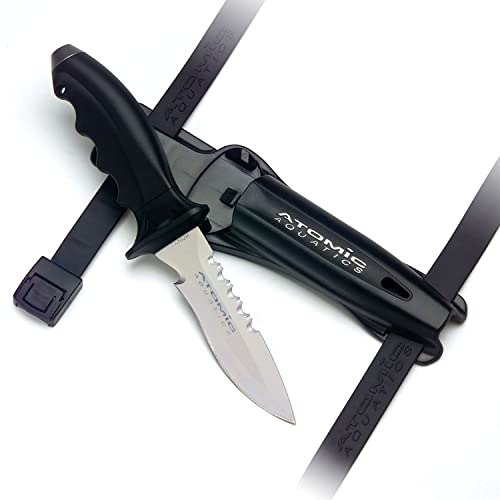
Check the price of Atomic Aquatics Titanium Ti6 Scuba Diving Knife on Amazon
Line Cutter
A line cutter is a scuba diving tool used to also cut fishing wires. These come in handy if you’re diving in locations where net entanglements are common.

Check the price of Dive Rite Line Cutter w/ Sheath on Amazon
Dive Slate
A dive slate is a scuba diving accessory that allows divers to write notes underwater during their dives. Underwater slates come in handy to record information that divers may need during a dive. If it’s hard to communicate using hand signals, divers can use the dive slates to express their thoughts and concerns.

Check the price of Promate Scuba Dive Underwater Writing Slate on Amazon
Pointer Stick
As the name suggests, a pointer stick is used to point out things underwater. Underwater pointies are used by divers, dive guides, and instructors to show dangers underwater as well as interesting marine life without having to get close. Some pointer sticks have measurement guides which come in handy if divers need to measure anything underwater.

Check the price of Pointer Stick w/Measurement & Lanyard on Amazon
Defogger
A defogger is something you put on your dive mask before a dive to prevent it from fogging. You can get anti-fog drops, but baby shampoo, toothpaste or plain old spit has also been proven to work effectively when applied before a dive.

Check the price of GEAR AID Sea Drops Anti-fog and Cleaner for Dive and Snorkel Masks on Amazon
Mask Strap Cover
A mask strap cover is a neoprene sleeve you can put over your rubber mask straps so you can comfortably wear your mask on your head. The neoprene mask strap wrapper also prevents your hair from snagging or entangling on the rubber straps. The unique mask strap cover designs are also useful in helping others identify you underwater.

Check the price of Neoprene Cover for Dive Mask on Amazon
For more designs and options, check out this list of best scuba mask straps covers.
Custom Fit Mouthpiece
A custom-fit mouthpiece is a remoldable mouthpiece for your regulator. You can swap out your generic regulatore mouthpiece with a moldable one designed to precisely fit your mouth, teeth, and jaw configuration.

Check the price of Seacure Custom Fit Mouthpiece for Scuba Diving on Amazon
Reef Hooks
A reef hook is a scuba diving accessory that scuba divers use to anchor themselves to the non-living part of the reef. These come in handy in dive areas with strong currents. Rather than exhaust themselves finning against a strong current, divers can use a reef hook to avoid being swept away.

Check the price of Scuba Diving Reef Dri’ Hook on Amazon
Wetsuit Changing Mat
The wetsuit changing mat is a practical diving accessory for individuals who need to change out of their suit after a dive. It protects your wetsuit from sand and dirt as you change. Made from strong PVC polyfabric, it can also keep your car or luggage clean by separating your wet and dry clothes after your dive.

Check the price of Wetsuit Changing Mat on Amazon
Save-a-Dive Kit
A Save-a-dive kit is a collection of easily replaceable dive gear parts in case something happens to your equipment. You can put together your own save a dive kit with spare o-rings, mask straps, fin straps, regulator mouthpiece, tie wraps and more.

Check the price of XS Scuba Save A Dive Kit on Amazon
Scuba Diver Log Books
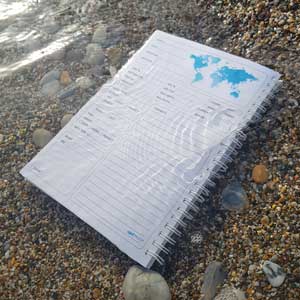
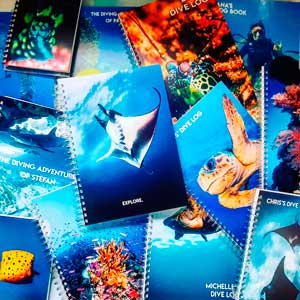
A scuba diving log book is a record-keeping tool divers use to keep a track of their dives. There are many reasons why you should log your dives, like to record the number dives you’ve had, the scuba gear you wore, what you struggled with in your dives, or the places you’ve been. If you are new to scuba diving, it is recommended you keep a logbook to help track your progress as a diver.
Looking for a scuba logbook to record your dives? Check out my list of the Best Diver’s Log Books!
Dive Gear Hanger
A dive hanger is a special heavy-duty hanger designed to hold your BCD, wetsuit, drysuit, regulator so they can dry and store properly after use.

Check the price of Multi Purpose Black Dive Gear Hanger on Amazon
Safety Equipment for Scuba Diving
Dive safety is very important when it comes to scuba diving. Aside from the scuba diver equipment that they wear, divers use several other scuba diving safety gear.
These pieces of diving equipment and gear help to keep them safe underwater or on the surface. They are also used by scuba divers during an emergency.
Surface Marker Buoys
A Surface Marker Buoy, also known as an SMB, is a scuba diving gear used by divers to indicate where they are in the water. Scuba divers use these so anyone on the surface can immediately spot them. SMBs are made of inflatable heavy-duty materials
These surface marker buoys serve as a reminder to boats or water vehicles to drive carefully if they are in the area. It warns vessels that there are divers that they could hit in the water so they should avoid the area or approach with caution.
As a safety practice, scuba divers tow an SMB all throughout the dive so boats can track where they are at all times. This prevents any boat-related dive accidents especially in locations with high traffic.
Dive flag float
A dive flag float is a kind of SMB that prominently displays a scuba dive flag. The diver down flag also known as a scuba flag or Alpha flag are used by divers as a warning signal for other vessels or individuals on the surface to stay at a distance or slow down.

Check the price of ScubaMax Inflatable Heavy Duty PVC Dive Flag Float on Amazon
DSMB
Another special kind of SMB is the DSMB which stands for Delayed Surface Marker Buoy. Also known as scuba sausage, DSMBs are deployed by scuba divers towards the end of the dive so they can safely ascend and exit the water.

Check the price of Surface Marker Buoy (SMB) with Finger Spool Alloy Dive Reel and Double Ended Bolt Clip on Amazon
These brightly colored tubes are filled with air underwater then released like a balloon. The diver holds on to the DSMB with a line and reel to ensure that it will not get lost. As they are longer inflatables, DSMBs also help divers get found if they get lost at sea.
Nautilus LifeLine Marine GPS
The Nautilus Lifeline Marine Rescue GPS is a waterproof tracking device that divers may use during an emergency situation. If a scuba diver gets lost at sea, he can activate his Nautilus and a distress message will be broadcast to all AIS-equipped ships up to 34 miles away. This is one of the gear for scuba diving you’d want to have but would never want to use.

Check the price of Nautilus LifeLine Marine GPS on Amazon
Scuba Tank Marker Lights
Scuba tank marker lights or dive tank lights are small signal lights that serve as a beacon for divers in the water. They are used by scuba divers to help see and identify each other while diving in the dark or in waters with low visibility. Usually attached to the diver’s air cylinder, these colored lights emit a soft glow that can be seen from a distance for easy identification.

Check the price of water-activated dive tank lights on Amazon
For more recommendations on this dive safety accessory, check out my list of best scuba diving tank marker lights.
Whistle
A whistle is another safety device divers can use during an emergency. Usually clipped on the BCD, you can blow your whistle to call the attention of someone when you need to be found on the surface.

Check the price of Storm Alert Whistle on Amazon
Signaling Mirror
A signaling mirror is a survival tool that divers can use to catch the attention of someone if they are stranded or lost at sea. The diver can use the signal mirror to reflect the sun and alert someone that they need to be rescued.

Check the price of Military Grade Glass Signal Mirror on Amazon
First Aid Kit
A first aid kit is a collection of supplies and equipment that is used by divers to give immediate medical treatment. It is very common for divers to gets cuts, scrapes, bites, and stings while scuba diving and if you’re in the middle of the ocean, first aid kits can help divers during a medical emergency.

Check the price of Small-Waterproof Car First-Aid Kit Emergency-Kit on Amazon
Dive Bags
Scuba Divers can use different types of bags to help protect their gear while in transit.
Dive Gear Bag
Depending on your traveling style and purpose there are many kinds of dive gear bag in the market today. From simple mesh dive bag to hard-case trolley ones, you can find a variety of designs specifically for those who love to scuba.

Check the price of Oceanic Mesh Duffel Bag on Amazon
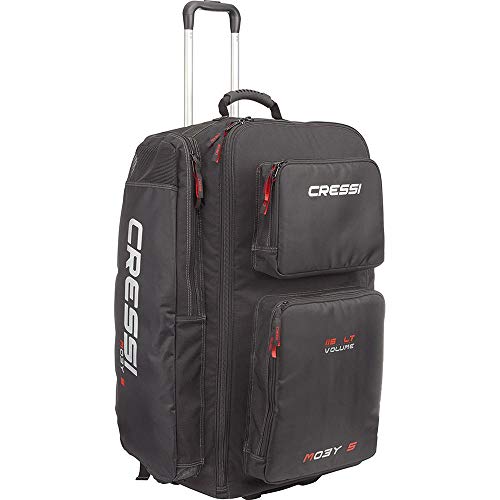
Check the price of Cressi Strong Large Capacity Roller Luggage Bag on Amazon
Dive Mask Bag
Dive mask bags are specifically designed to protect your mask from scratches or dents. These dive mask bags come in handy, especially when you’re not using your mask or while traveling.

Check the price of Scubapro Mask 2 Mask Pocket Bag on Amazon
Regulator Bag
Dive Regulators Bags keep your scuba regulators protected while in transit.

Check the price of AKONA Pro Scuba Diving Regulator Bag on Amazon
Dry Bag
Keep your valuables dry and protected with these waterproof bags. Dry bags can come in a variety of colors, sizes, and styles to fit your needs.

Check the price of Waterproof Dry Bag on Amazon
Scuba Diving Camera
If you’re new to scuba diving, it is recommended that you master your dive skills first before you even consider buying an underwater camera.
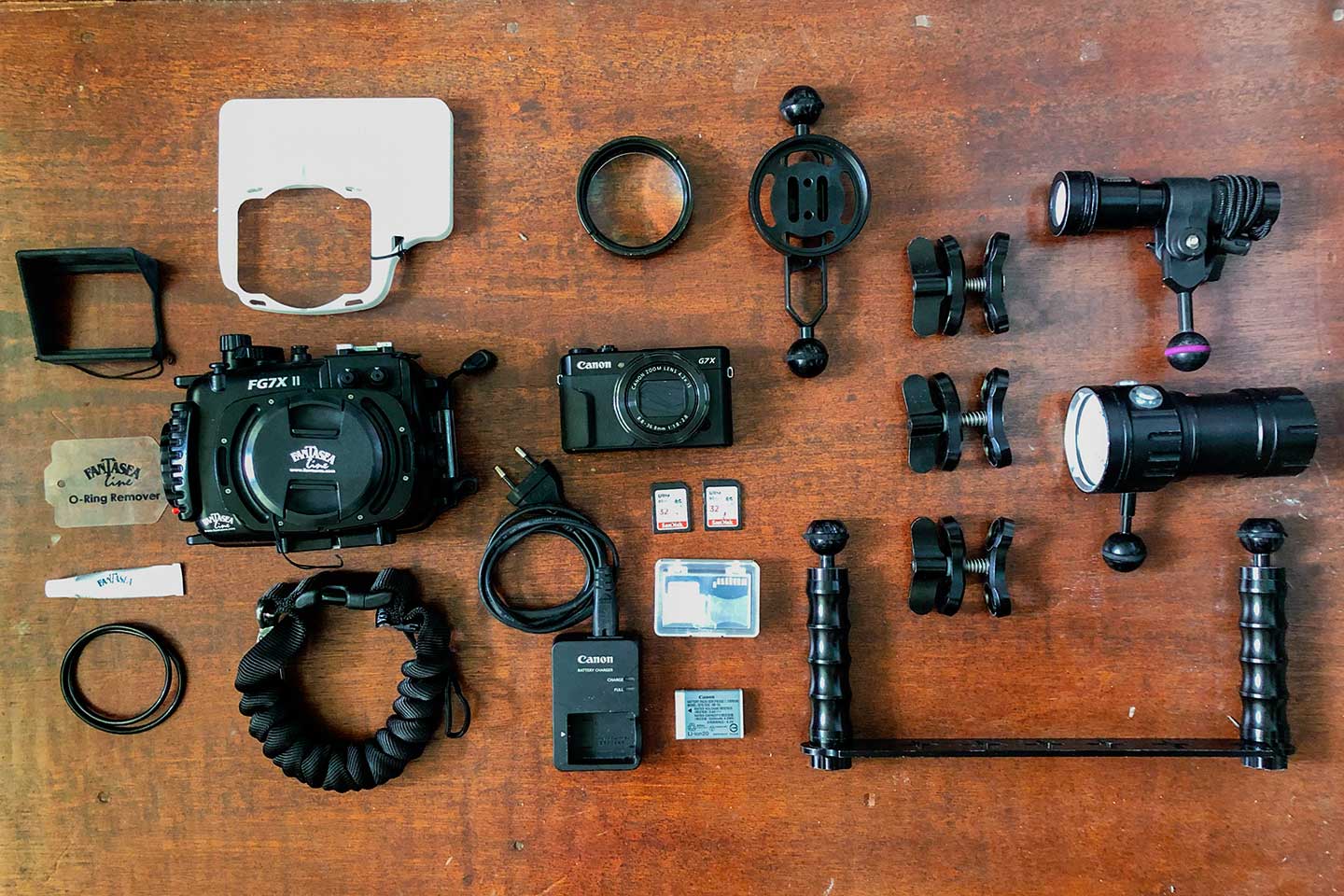
Remember that not all waterproof cameras will be suitable for diving. You need to consider depth rating and you might even want to get one with underwater housing.
Should the time come that you want your own dive camera, you can check my guide on choosing the best scuba diving camera for the first time.
My Scuba Diving Gear
Regulator: Scubapro MK25 Evo, C300 and C200 2nd Stage
BCD: Aqualung Axiom
Mask: TUSA M-212 Freedom Ceos
Snorkel: TUSA SP-170 Platina Hyperdry II
Booties: Poseidon Pink Dive Boots
Fins: Problue
Wetsuit: Seavenger
Vest Hoodie: Scubapro Hybrid Hooded Vest
Dive Watch: Suunto D4i Novo
Dive Knife: Aqualung Blunt Tip Knife
Dive Leggings and Rash: Blue Adaptation Coral Sea Fan
My Underwater Camera Gear
Underwater Camera: Canon G7X Mark II
Underwater Camera Housing: Fantasea FG7XII
Video Lights: Big Blue AL1200XP
Underwater Action Camera: GoPro Hero9
360 Camera: Insta360 X3
> Canon G7X Mark II full review
> Insta360 X3 underwater camera review
> Scuba diving camera recommendations for beginners.
Dive Insurance
Divers Alert Network (DAN)


Need travel insurance for your trip? Get a quote from Safety Wing.
Scuba Diving Equipment Prices
As you can see, you will need several pieces of equipment and gear for scuba diving. And if you add it all up and buy everything on this scuba diving equipment list, it can be very costly!
A basic brand new dive kit set up can cost you at least USD1500. And this doesn’t even include all the bells and whistles!
For a more detailed breakdown, read: Scuba Diving Cost: How Much Money Do You Need to Scuba Dive?
But don’t worry, you can still enjoy scuba diving even if you don’t have your own set of scuba diving equipment. You can always rent gear from reputable dive shops and you don’t have to worry about the initial hefty investment and not to mention the cost for maintenance and repairs.
Of course, if you have the budget, then why not! Buying your own scuba gear can be a good investment to make especially if you dive often.
If you do want to buy your own gear for scuba diving, remember that you don’t have to buy everything in one go. Many divers gradually build their scuba diving kit instead of buying everything on the scuba diving equipment list. You can also buy second-hand gear, which is also an economical way of acquiring scuba diving equipment.

Check the price of Aqua Lung Pro HD Dive Package on Amazon
You can also check out scuba diving equipment packages from your local scuba store. Many dive shops offer bundles and good deals that can save you lots of money. And if you go to dive shows and expos, many brands and dive stores put their products on sales or offer amazing deals.
Yes, scuba diving equipment prices can get very expensive but you can also purchase smart. Remember that most of these are essential to keeping you alive and safe. There are some things that you don’t want to buy cheap especially if your life depends on it.
For more tips and advice about shopping for dive equipment, check out my Guide to Buying Scuba Gear for the First Time.
Pin this for later!
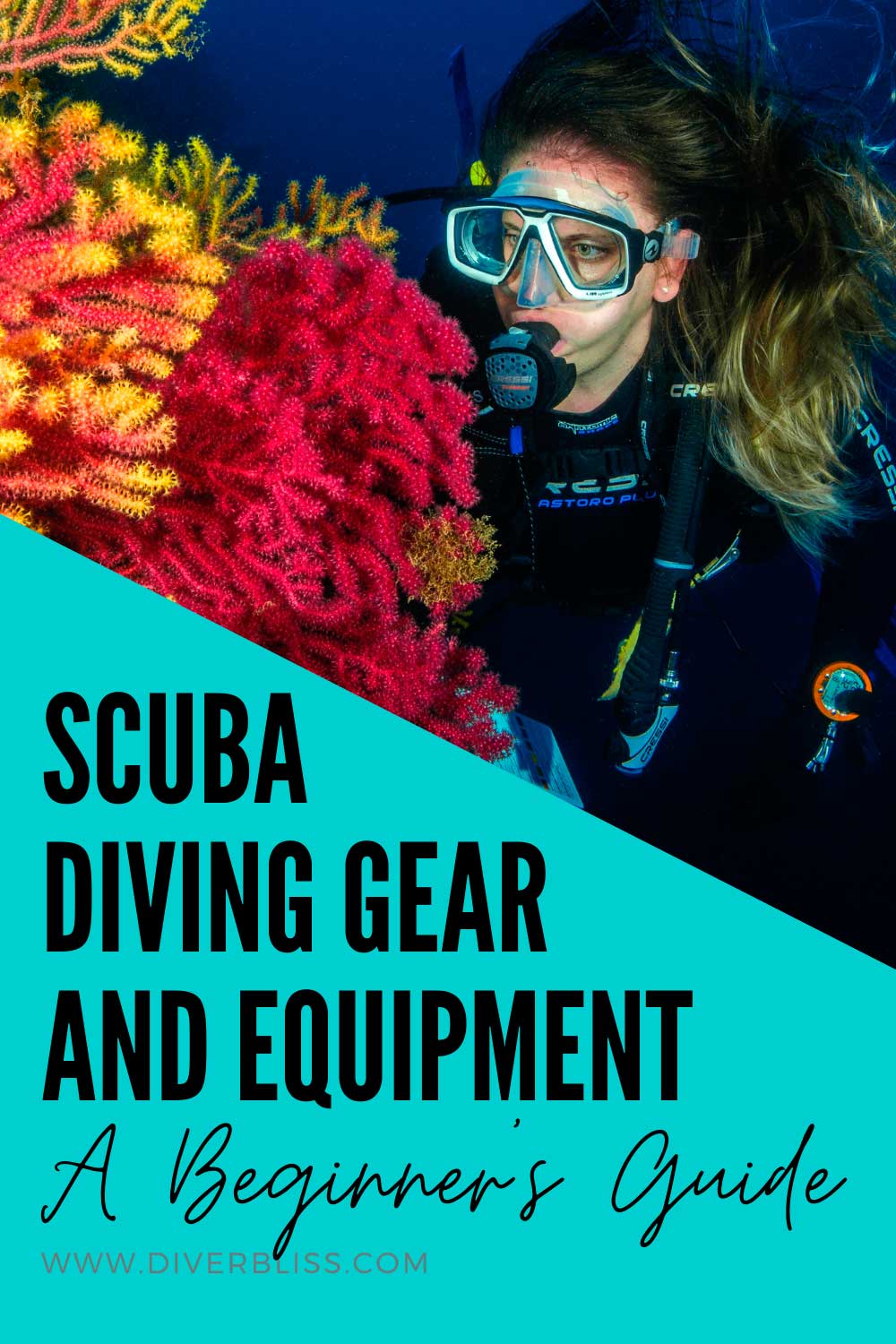
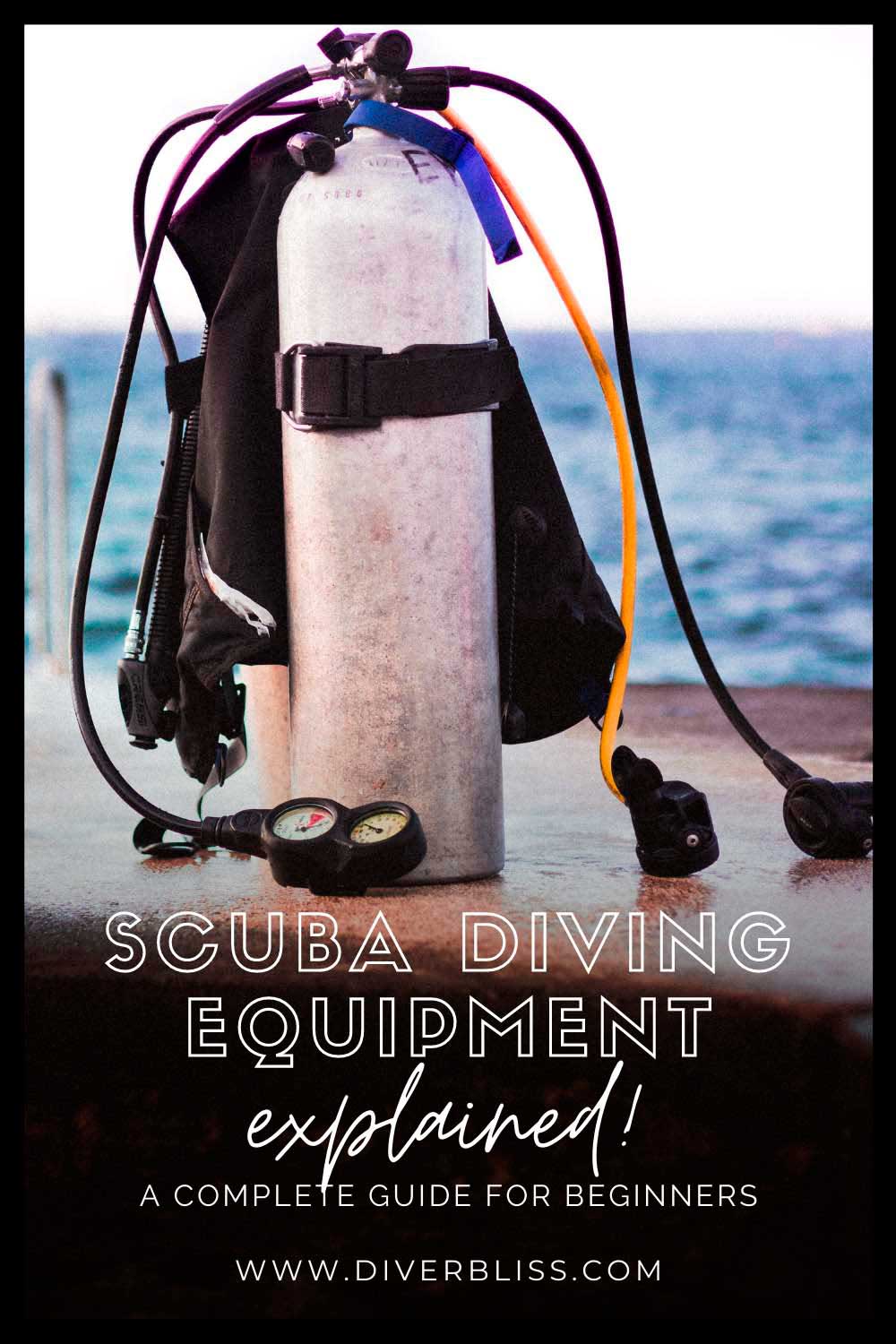
What equipment for scuba diving would you buy first? Which scuba gear do you already have and love using? Leave a comment below!
